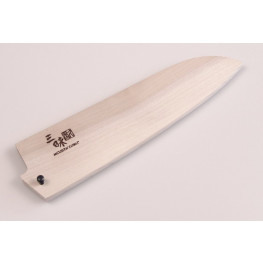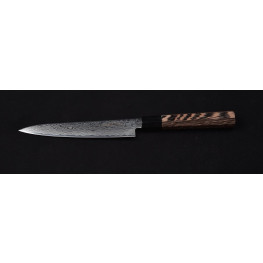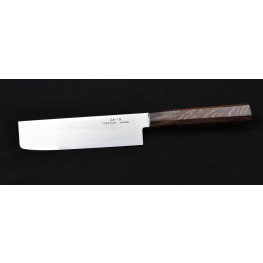Product detail

Aoki Hamono Co. Ltd., the manufacturer of the Sakai Takayuki brand is one of the most prominent knife producers in Japan. The fact that he has been based in the city of Sakai for over 60 years tells us that his knives are mainly intended for professional use. The range of materials and techniques is very extensive and we are pleased to introduce them to you gradually.
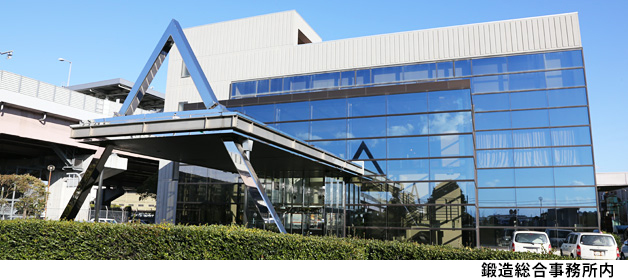
And we'll shoot really high right away. Even to the neighboring galaxy? Yes, that is exactly the name of the series of these knives. GINGA in Japanese. The galaxy is reminiscent of the 67 layers of a beautiful damascene blade. It is made up of 66 interlaced layers of softer and harder steel. In the center between them sits the core of the blade. Surprisingly, this does not come from Takefu or Yasugi, but from Aichi Prefecture, specifically from Aichi Steel Co.This steel mill, well-known to us for the
materials AUS6, AUS8, AUS10, belongs to the concern Toyota and 40% of its production goes to automotive industry.
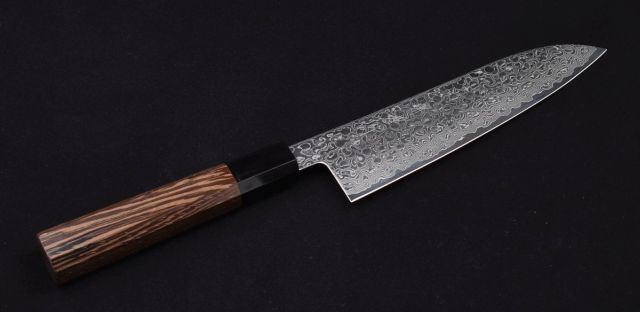
The success of the interlaced steel with a VG10 core from Takefu Special Steel obviously did not contribute to the calm sleep of the engineers from Aichi Steel, so they came up with a similar one under the designation ZA-18. So that the composition was not strikingly similar, they increased the content of carbon, chromium, tungsten and cobalt. Thus, they achieved higher abrasion resistance and, unfortunately, also the price. It is quite possible that this is the reason for the lower usage compared to VG10. The core is hardened to 62-63 HRC, which is actually an above-standard value. The blade is Hamaguri-shaped. The right side of the blade bears embossed kanji characters with the brand name, the left laser inscription TAKAYUKI JAPAN and the steel marking.
The material composition and craftsmanship of the blade deserve a high-quality ferrule. It is therefore made of genuine buffalo horn and smoothly transitions into a beautiful octagonal handle made of exotic wenge wood. Its elegant brown-black drawing only accentuates the luxurious status of these knives.
Sakai Takayuki Ginga rightfully found a place in our Top Gun section.
©2022 Copyright Roman Ulík, Nippon Knives, www.japonskenoze.sk all rights reserved.
Photos and texts are protected by copyright law and their use without the author's consent is not possible.
About producer

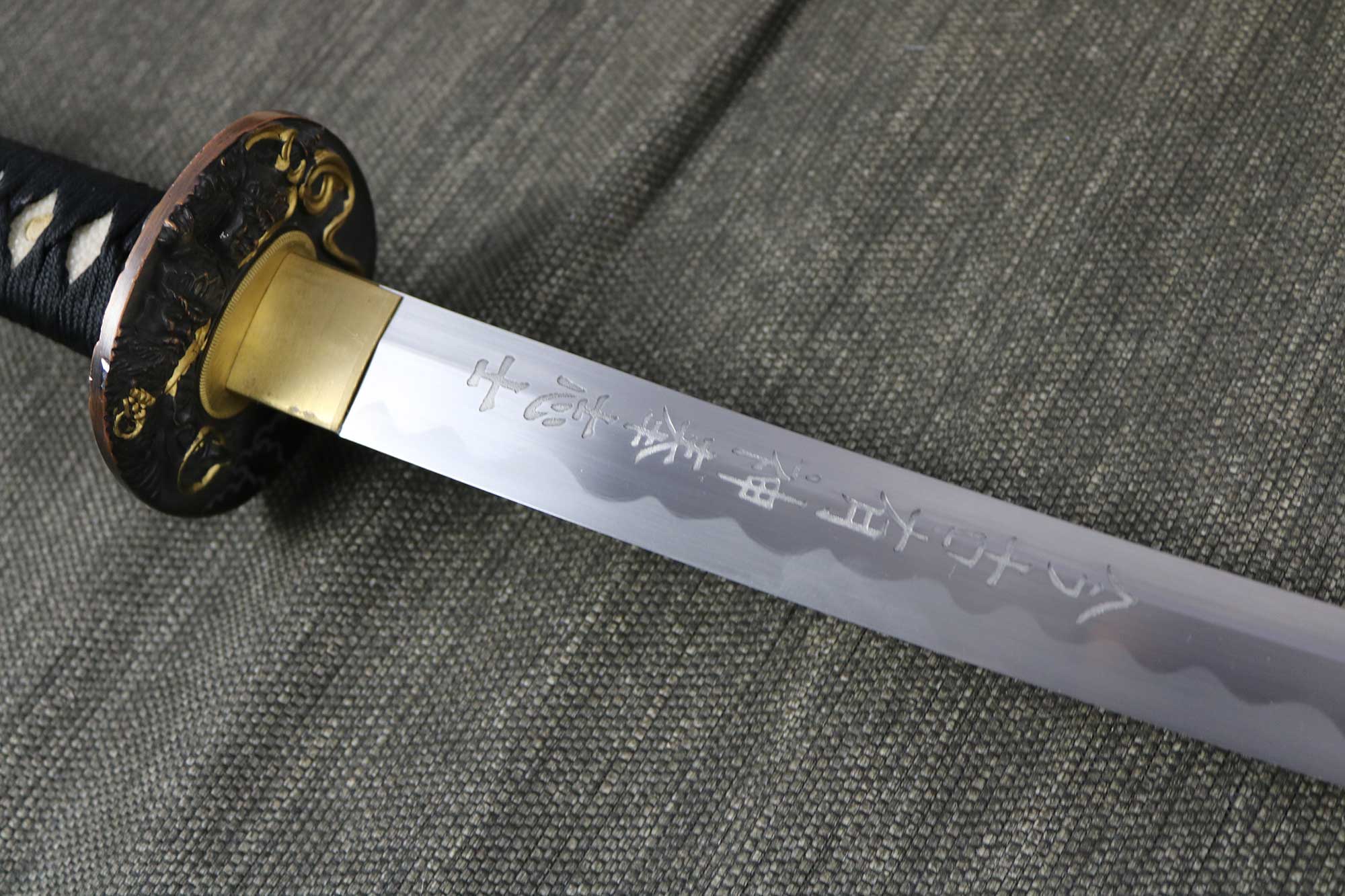
Sword – a symbol of ancient Japan. It is no coincidence that it forms one of the imperial insignia. It is a Kusanagi sword and its core was also created by multiple folding and forging of the highest quality steel. Thanks to many generations of talented craftsmen, this proven method of producing hard and tough material has been preserved to this day. This is how knives were created that have no parallel in the world.
Sakai, or the city of knives, is today a western suburb of Osaka. The city experienced its greatest development in the 16th century, when it was one of the busiest commercial centers. The latest technologies from all over the world as well as different cultures met here. This helped the development of blacksmithing techniques, which had already reached a high level thanks to the production of traditional swords. The Portuguese brought the first rifles to the area and Sakai blacksmiths changed the production program. But since it was a period of peace, they mainly produced decorative rifles. With the boom in tobacco, they smoothly transitioned to the production of knives for cutting tobacco, but the mechanization of its processing resulted in another production change. Blacksmiths began to specialize in the production of kitchen knives. It was also influenced by the proximity of another important city - Kyoto. It is characterized by its culinary art, and the preparation of individual dishes requires special knives. Today, the majority of Japanese chefs use knives made in the city of Sakai.
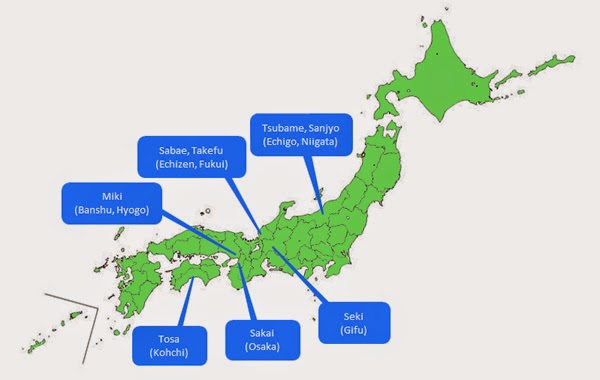

Sakai has a slightly shorter history compared to Seki, but nowadays it is their meaning comparable. The difference is mainly in the production program. In Seki, the production of Western-style Japanese knives prevails, with a strong emphasis on export. Manufacturers in Sakai, on the other hand, specialize mainly in traditional Eastern-type knives. Their clientele consists mainly of Japanese professional chefs.

Mr. Takayuki became famous for consolidating the Sakai blacksmiths in 1946. He provided them with production facilities and tools and thus founded the Sakai Takayuki brand. It is currently being looked after by the 3rd generation of this family. The brand is owned by Aoki Hamono, which in 2006 won the prestigious Sakai Wazashu award for the skill of local manufacturers.
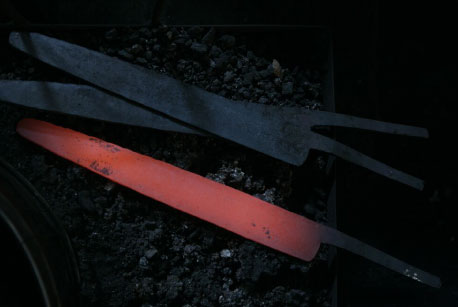
The potential of the Aoki Hamono company lies in key personnel positions, which are blacksmith and grinder. Masters with high awards and with experience exceeding 50 years in some cases work here.
Keijiro Doi - blacksmith
At the age of 19, he took the place of his father, a prominent blacksmith, in the workshop. In 1987, he was certified by the Ministry of International Trade and Industry as a Blacksmith Master. In 1997, he received the Green Paulownia Leaves award.
Yukinori Oda – grinder
He is a holder of the Sacred Treasure order, Silver Rays. Already at the age of 20, he became a master. He sticks to his motto: "The sharpness of a good knife is 100%." However, the role of the grinder is to increase it to 120%."
Suogo Yamatsuka - blacksmith
He constantly pushes the boundaries of perfection. He specializes in Gingami 3 anti-corrosion steel.
Hirotsugu Tosa – grinder
He was born in 1948 and trained as a grinder at the age of 18. In 1991 he achieved the title Sharpener Master. He knows no compromises in his work because he is constantly thinking about the users of his knives.
Itso Doi - Blacksmith
Son of Master Keijiro. It represents the third generation of the clan. He is best placed to preserve this championship for generations to come.
Mitsuo Yamatsuka – grinder
In 1999, he received the Japanese Traditional Craftmanship certificate. It is a guarantee that a traditionally forged knife will acquire "Sakai" sharpness.
Due to the handmade production and the huge interest among professionals in Sakai knives, it is quite difficult to obtain at least a few pieces. Our efforts and patience finally brought us the honor of introducing you to products in which the soul of their makers resides. Welcome to Sakai!
Video from the workshop
©2019 Copyright Roman Ulík, Nippon Knives, www.japonskenoze.sk all rights reserved.
Photos and texts are protected by copyright law and their use without the author's consent is not possible.


 Sign in
Sign in Registration
Registration














